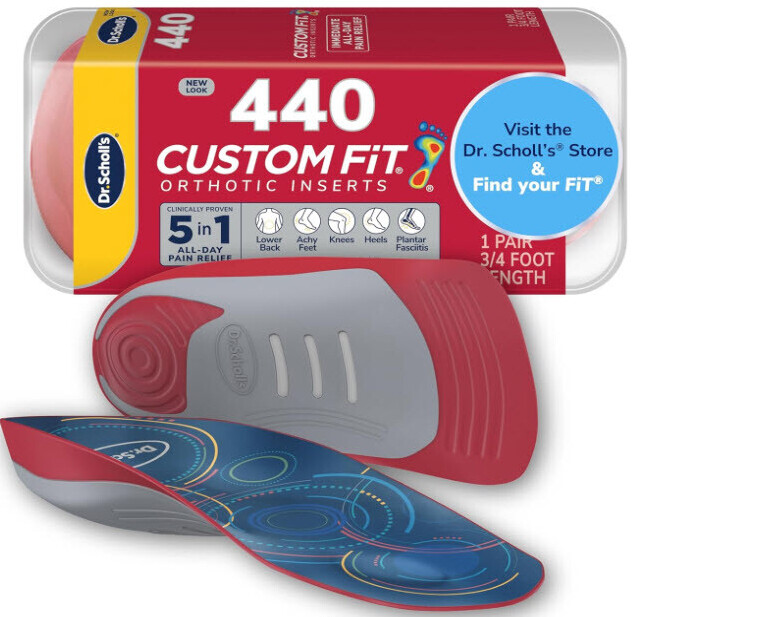
Orthotic inserts are more than just an accessory for your shoes. These nifty tools are designed to provide additional support, comfort, and correction to the feet’s structure. Think of them as personalized cushions for your feet, tailored to meet specific needs, whether you have flat feet, high arches, or any other unique foot structure.
Believe it or not, orthotic inserts have been around for centuries. Early versions were quite rudimentary, often made from leather or cork. Over the years, technological advancements have transformed these inserts into sophisticated devices made from high-tech materials, offering superior support and comfort.
Why are orthotic inserts important in orthopedic shoes? That’s a good question. Orthopedic shoes are specifically designed to support the structure of the foot, ankle, and lower leg. However, combining them with orthotic inserts provides a customized fit, significantly enhancing comfort and effectiveness. This combo is especially crucial for individuals with chronic foot conditions, as it offers targeted relief and support.
Certain foot conditions can significantly benefit from orthotic inserts. Conditions like plantar fasciitis, bunions, and flat feet often cause daily discomfort and pain. Orthotic inserts can alleviate these symptoms by providing the necessary support and realigning the foot structure, ultimately improving the quality of life.
Different Types of Orthotic Inserts
Custom-made orthotic inserts are crafted specifically for your feet. They can be customized based on a detailed analysis of your foot mechanics, ensuring precise support and alignment. Custom options are great for those with specific or severe foot conditions; however, they tend to be on the pricier side.
Over-the-counter orthotic inserts are more affordable and readily available. They aren’t personalized, but they come in various shapes, sizes, and support levels to cater to common needs. They can be a good starting point if you’re new to using orthotic inserts.
Materials in orthotic inserts can vary widely. Some common materials include foam, gel, cork, and thermoplastic. Foam inserts are lightweight and provide cushioning, while gel inserts offer exceptional shock absorption. Cork has a natural firmness ideal for support, and thermoplastics are often used in more rigid orthotics for structural support.
Different foot conditions often require specialized inserts. For example, someone with flat feet might benefit from rigid support to prevent overpronation, while a person with plantar fasciitis may need a softer insert with extra heel cushioning to ease pain.
Choosing the right orthotic insert involves understanding your specific needs and condition. Consider factors like the type of support you need, the material, and how the insert fits in your shoe. It might take a bit of trial and error before you find the perfect match for your feet.
Benefits of Using Orthotic Inserts
Wearing orthotic inserts can offer much-needed comfort, especially if you’re on your feet all day. By providing additional support where your feet need it most, they help distribute pressure more evenly. This can alleviate pain and make each step feel much more comfortable.
Improved foot and body alignment isn’t something to overlook. Misalignment can lead to a host of other issues, from knee pain to lower back discomfort. Orthotic inserts help correct these imbalances, promoting better overall posture and reducing the risk of developing other musculoskeletal problems.
Prevention of further foot issues is another significant benefit. Orthotic inserts provide a supportive foundation, preventing common conditions like plantar fasciitis, bunions, and shin splints. They not only address current problems but also help keep new issues at bay.
Enhanced daily mobility is essential for maintaining an active lifestyle. With the proper support from orthotic inserts, activities like walking, running, and even standing for long periods become more manageable. This boost in comfort and mobility can drastically improve your quality of life.
Hearing from real people can be incredibly motivating. Many who have incorporated orthotic inserts into their lives share positive experiences, from overcoming chronic foot pain to enjoying a more active and comfortable daily routine. These testimonials highlight the remarkable difference orthotic inserts can make.
Caring for and Maintaining Your Orthotic Inserts
Proper care ensures your orthotic inserts last longer and continue providing the support you need. Cleaning your inserts regularly is a good place to start. Use mild soap and water, then air dry them completely before placing them back in your shoes. Avoid using harsh chemicals or soaking them in water, as this could damage the materials.
Knowing when to replace your orthotic inserts is crucial. Most inserts last between six months to a year, depending on usage and material. Signs that it’s time for a replacement include visible wear and tear, reduced comfort, or any changes in foot pain.
Maximizing the lifespan of your inserts involves a few simple habits. Rotate between different pairs of shoes to reduce constant pressure on the inserts. Removing them from shoes when not in use can also help maintain their shape and effectiveness. Pay attention to how your feet feel—if you notice discomfort, it may be time for a new pair.
Avoiding common mistakes can make a big difference. Don’t trim your inserts to fit your shoes unless specified by the manufacturer, as this can affect their functionality. Ensure they’re always placed correctly in your shoes to provide proper support. And remember, even though they’re durable, orthotic inserts aren’t invincible. Treat them with care to get the most out of them.
